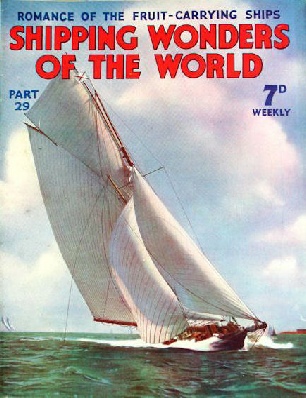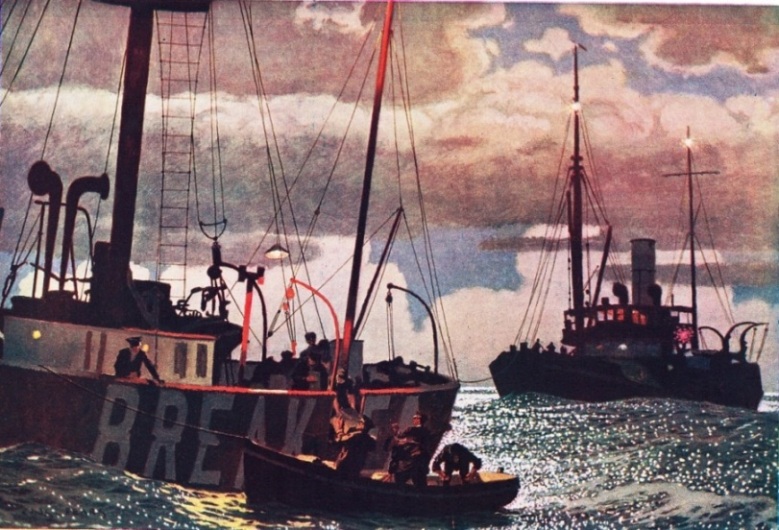
© Shipping Wonders of the World 2012-



Part 29
Part 29 of Shipping Wonders of the World was published on Tuesday 25th August 1936.
This issue included a colour plate illustrating the Breaksea lightship in the Bristol Channel, which formed part of the article on the Port of Bristol. The plate was attached to page 909 of part 29.
The Cover
This week’s cover shows the famous old-time racing cutter Mohawk, her lee-rail awash. In 1896, the Mohawk won the Royal Yacht Squadron’s Queen’s Cup. Her owner at that time was Major Orr-Ewing.

Contents of Part 29
Hazards of the Sea
The story of sailing vessels that were used as trap-ships and decoys during the war of 1914-18, concluded from part 28.
A Launch That Failed
A two-page photo-feature on the Principessa Jolanda, launched on September 22, 1907.
The Port of Bristol
In the City Docks and in the docks at Portishead and Avonmouth are ample facilities for the handling of general cargoes. Most of the import of bananas from the Caribbean to Great Britain is handled at Avonmouth, where also are up-to-date granaries and oil storage installations. Bristol has been a great port from the earliest days of British seafaring, when nearly all our great mariners came from the West Country. From Bristol the Cabots set sail in 1497 to discover Newfoundland. Bristol was, in fact, the port of the Merchant Venturers, and to-day it still retains its former greatness and is one of the leading ports of the British Isles. Bristol’s principal imports are bananas, oil and grain, apart from general cargoes.
This chapter is the ninth article in the series on Great Ports of the World.
The Breaksea Lightship in the Bristol Channel (colour plate)
